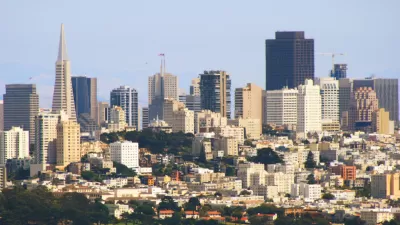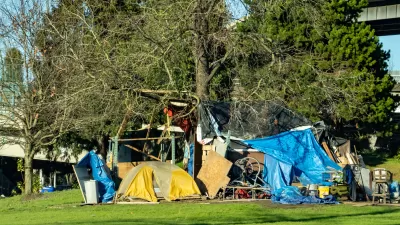Developers get a lot of milage from building privately owned public spaces—but the public often doesn't. Planners in San Francisco are now requiring buildings to make hidden POPS known, so that the public can actually use them.

Many a development agreement has been sweetened by the inclusion of privately owned public spaces (POPS), which are intended to provide community benefits at developers' expense. POPSs can include plazas, paseos, seating areas, sculpture gardens and the like, all of which are supposed to be accessible to and enjoyed by the public. In San Francisco, one square foot of POPS is required for every 50 square feet of new commercial space.
Years of research indicates, however, that POPS's are rarely used, in part because they are often hidden or, as San Francisco Chronicle architecture critic John King puts it, "cynically discreet." They become dead spaces even as developers reap the benefits.
The city of San Francisco is trying to reverse this trend by requiring landlords to post signs and otherwise make POPS more visible. Planners will also be making sure that the POPS that developers have built actually match up with those that were promised.
“A key element of the city’s downtown plan is that we need publicly accessible spaces that are easy to find and that people can enjoy,” said Scott Sanchez, the City Planning Department’s zoning administrator. “If you don’t know they’re there, you won’t use them.”
FULL STORY: S.F. making sure high-rise owners ID hidden public spaces

Alabama: Trump Terminates Settlements for Black Communities Harmed By Raw Sewage
Trump deemed the landmark civil rights agreement “illegal DEI and environmental justice policy.”

Study: Maui’s Plan to Convert Vacation Rentals to Long-Term Housing Could Cause Nearly $1 Billion Economic Loss
The plan would reduce visitor accommodation by 25% resulting in 1,900 jobs lost.

Planetizen Federal Action Tracker
A weekly monitor of how Trump’s orders and actions are impacting planners and planning in America.

Wind Energy on the Rise Despite Federal Policy Reversal
The Trump administration is revoking federal support for renewable energy, but demand for new projects continues unabated.

Passengers Flock to Caltrain After Electrification
The new electric trains are running faster and more reliably, leading to strong ridership growth on the Bay Area rail system.

Texas Churches Rally Behind ‘Yes in God’s Back Yard’ Legislation
Religious leaders want the state to reduce zoning regulations to streamline leasing church-owned land to housing developers.
Urban Design for Planners 1: Software Tools
This six-course series explores essential urban design concepts using open source software and equips planners with the tools they need to participate fully in the urban design process.
Planning for Universal Design
Learn the tools for implementing Universal Design in planning regulations.
Caltrans
Smith Gee Studio
Institute for Housing and Urban Development Studies (IHS)
City of Grandview
Harvard GSD Executive Education
Toledo-Lucas County Plan Commissions
Salt Lake City
NYU Wagner Graduate School of Public Service





























